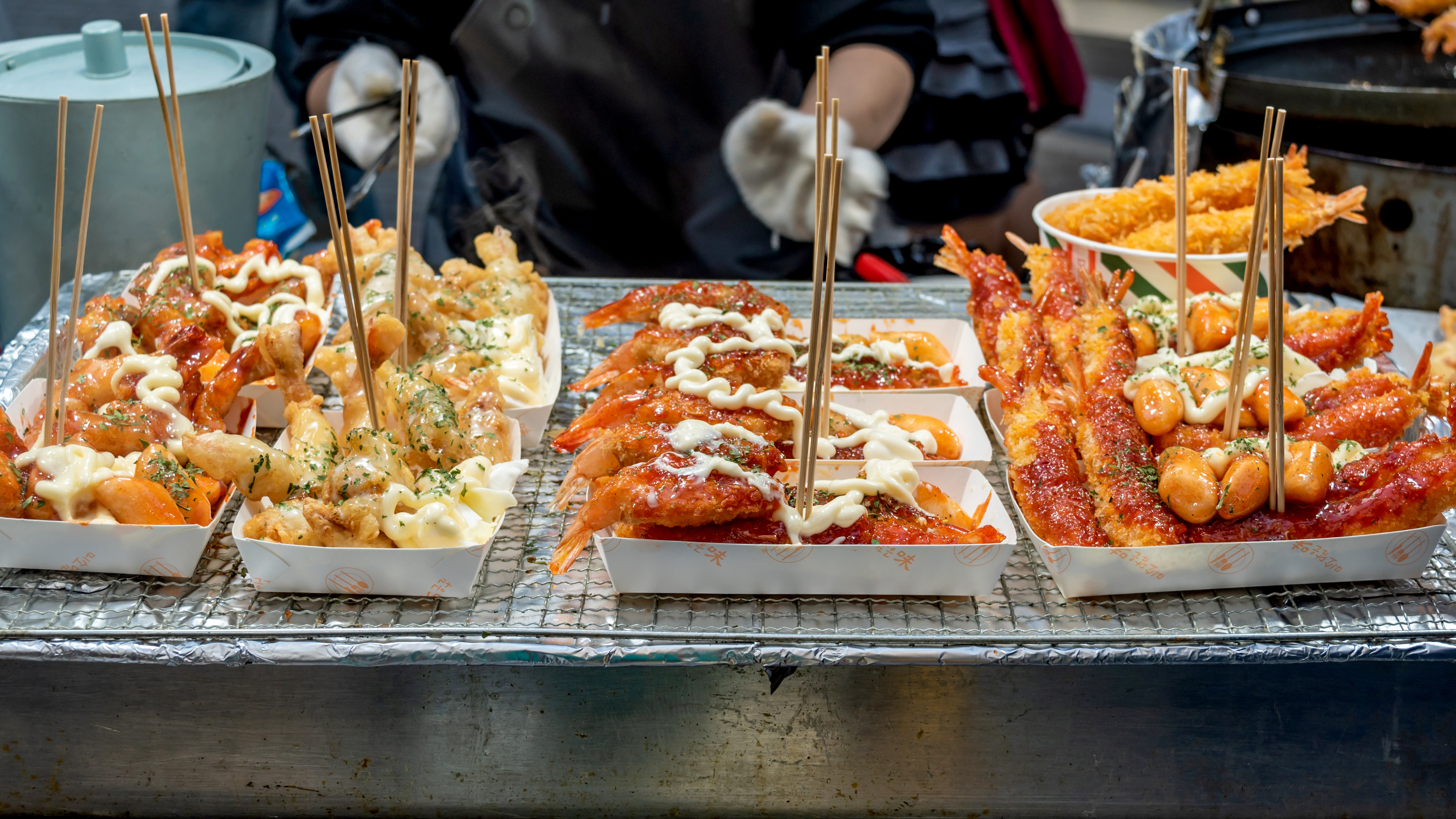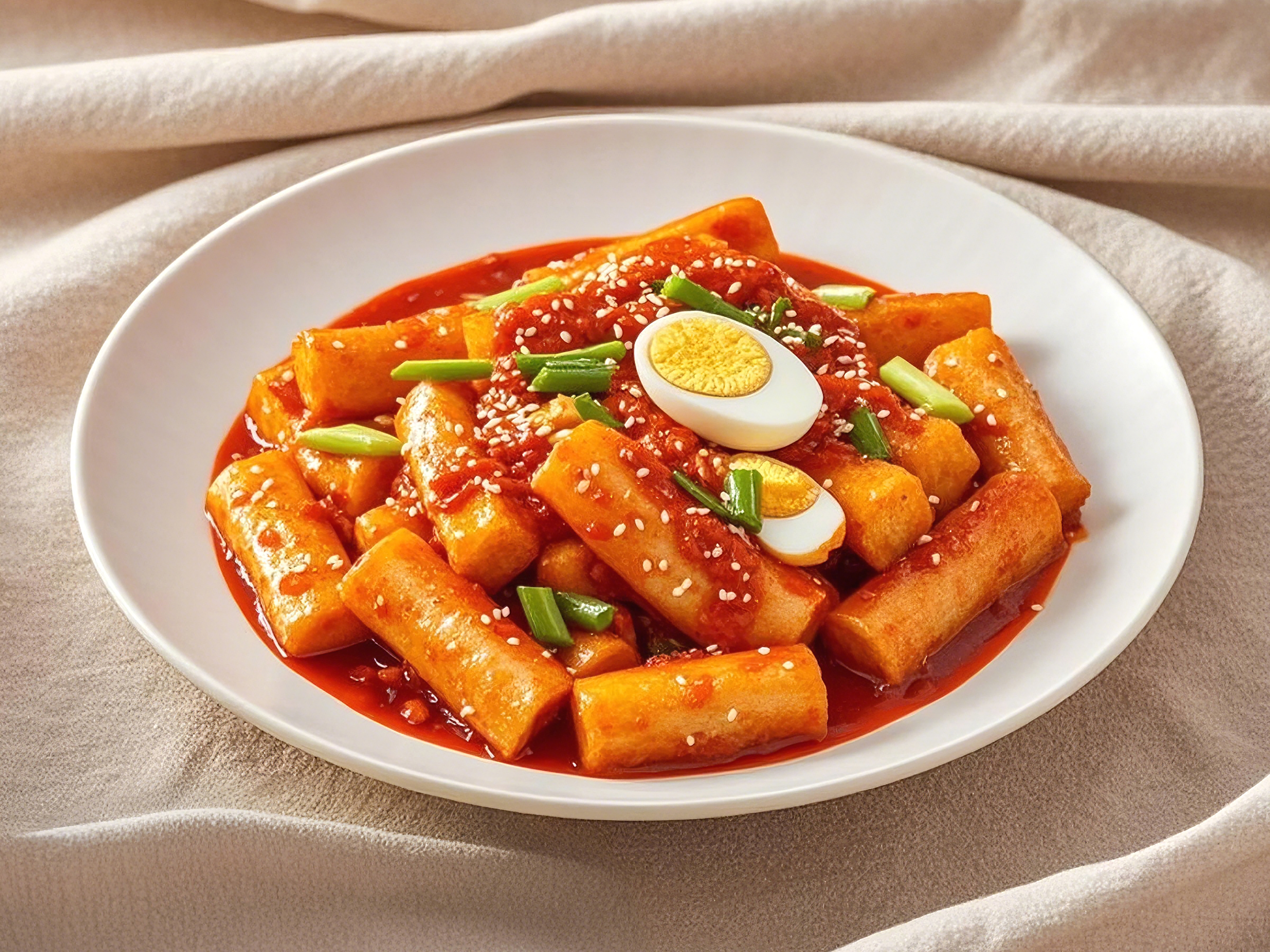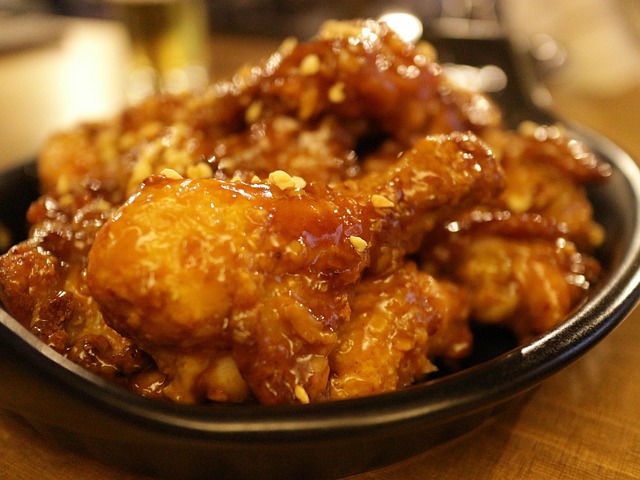

Standing in front of countless Korean street food vendors with steaming hot dishes you can't identify? Overwhelmed by the endless options at Myeongdong night market but afraid to order something you might not like? Watching locals devour delicious-looking snacks while you stick to the safety of McDonald's because you don't know what to try?
This ultimate street food guide reveals ① the must-try Korean street foods that even picky eaters love, ② insider tips on where to find the best vendors and how to order like a local, and ③ budget-friendly strategies to experience Korea's incredible food culture without breaking the bank. Stop missing out on Korea's most beloved culinary treasures and start eating your way through the country like a true foodie!
Table of Contents
1. Top 10 Must-Try Korean Street Foods: From Tteokbokki to Hotteok
2. Best Korean Street Food Markets: Where to Find Authentic Flavors
3. Popular Korean Street Food in Seoul: Tourist Hotspots vs Local Gems
4. Korean Street Food Prices and Ordering Guide: Eat Smart, Spend Less
5. Korean Street Food Safety Tips: Enjoy Delicious Food Worry-Free



1.Top 10 Must-Try Korean Street Foods: From Tteokbokki to Hotteok
Korean street food represents the heart of Korea's culinary culture, offering affordable, delicious, and authentic flavors that locals have loved for generations. Tteokbokki (spicy rice cakes) ranks as Korea's most iconic street food, featuring chewy rice cakes in sweet and spicy gochujang sauce that perfectly balances heat with umami depth. Hotteok, sweet pancakes filled with brown sugar, cinnamon, and nuts, provides the perfect comfort food for cold Korean winters. Gimbap offers a healthy, portable option with seasoned rice and vegetables wrapped in seaweed, while Korean corn dogs (hotdogs coated in various batters and toppings) have become Instagram sensations. Bungeoppang, fish-shaped pastries filled with sweet red bean paste, represents traditional Korean winter street food culture. Odeng (fish cake soup) provides warming broth perfect for Seoul's cold seasons, while pajeon (green onion pancakes) offers crispy, savory satisfaction. Korean fried chicken from street vendors often surpasses restaurant quality, and fresh fruit vendors provide healthy, refreshing options year-round.
○ Real-Life Example: Food blogger Jake from Canada spent his first day in Seoul trying to find "safe" Western food until a friendly Korean university student invited him to share tteokbokki at a street cart near Hongik University. The sweet-spicy flavors and chewy texture instantly converted him into a Korean street food enthusiast. He spent the remaining six days of his trip systematically trying every street food he could find, documenting each experience and creating viral content about his Korean food adventure.
○ Practical Tips:
Start with milder options like gimbap or hotteok before trying spicier foods like tteokbokki
Look for vendors with long local queues - they're usually the best quality and freshest options
Try combination plates that let you sample multiple items for better value and variety
Visual Element: Korean Street Food Difficulty Chart - Spice levels, adventurousness scale, price ranges, and dietary restriction indicators for each popular street food
2. Best Korean Street Food Markets: Where to Find Authentic Flavors
Korea's street food markets offer concentrated experiences where dozens of vendors create food paradise environments perfect for culinary exploration. Myeongdong Street Food Market provides tourist-friendly options with English signs and international payment methods, though prices run slightly higher due to prime location convenience. Gwangjang Market, Seoul's oldest traditional market, offers the most authentic experience with century-old vendors serving recipes passed down through generations. The market's mayak gimbap (mini rice rolls) and bindaetteok (mung bean pancakes) represent must-try specialties found nowhere else. Hongdae's street food scene caters to younger crowds with trendy fusion options and late-night availability, while Itaewon offers international fusion street foods alongside traditional Korean options. Busan's Jagalchi Fish Market provides fresh seafood street food experiences, and Jeonju's traditional market showcases regional specialties like bibimbap-inspired street food variations. Each market offers unique atmospheres, price points, and specialty items that reflect local culture and preferences.
○ Real-Life Example: British couple Sarah and Tom initially planned to spend one hour at Gwangjang Market but ended up staying four hours, moving from vendor to vendor as each new smell and sight captured their attention. They discovered that market vendors often offer free samples, especially when they showed genuine interest and attempted basic Korean phrases. Their favorite discovery was a 70-year-old grandmother's bindaetteok stall where she personally taught them how to eat the pancakes with the proper dipping sauce combination.
○ Practical Tips:
Visit markets during peak meal times (12-2 PM, 6-8 PM) when food turnover is highest and freshest
Bring cash as many traditional market vendors don't accept cards or international payment methods
Learn basic Korean food vocabulary or use translation apps to communicate dietary restrictions or preferences
Visual Element: Market Comparison Guide - Operating hours, specialty foods, price ranges, tourist-friendliness ratings, and transportation access for major Korean food markets
3. Popular Korean Street Food in Seoul: Tourist Hotspots vs Local Gems
Seoul's street food landscape divides distinctly between tourist-focused areas offering convenience and accessibility versus local neighborhoods providing authentic experiences at lower prices. Tourist hotspots like Myeongdong, Insadong, and Hongdae feature vendors with multilingual menus, international payment acceptance, and Instagram-worthy presentations, but prices typically run 30-50% higher than local areas. These locations excel for first-time visitors seeking familiar service styles and guaranteed food safety standards. Local gems in neighborhoods like Mangwon, Seongsu, and university areas near Ewha or Yonsei offer identical food quality at fraction of tourist area prices. Korean university districts provide particularly excellent value, as vendors cater to budget-conscious students while maintaining high quality standards. Residential market areas in Gangnam's back streets or traditional neighborhoods offer family-run operations where recipes haven't changed in decades. Evening food trucks near office buildings provide authentic after-work dining experiences where office workers gather for quick, satisfying meals.
○ Real-Life Example: American teacher Lisa, living in Seoul for six months, conducted her own street food price comparison experiment. She bought identical tteokbokki portions in Myeongdong (4,000 won), Hongdae (3,500 won), and near Ewha University (2,500 won). Surprisingly, the university area version had the most generous portions and spiciest flavor, while the Myeongdong version was mildest to accommodate tourist palates. Her Korean colleagues confirmed that local areas often provide better value and more authentic flavors.
○ Practical Tips:
Explore beyond main tourist areas by taking subway to university stations for authentic experiences and better prices
Use Google Translate camera function to read Korean-only menus at local vendors for access to full options
Ask locals or hotel staff for neighborhood recommendations rather than relying solely on tourist guidebooks
Visual Element: Seoul Street Food District Map - Price comparisons, authenticity ratings, tourist-friendliness levels, and recommended items for each major area
4. Korean Street Food Prices and Ordering Guide: Eat Smart, Spend Less
Korean street food offers exceptional value with most items ranging from 1,000-5,000 won (approximately $0.75-$4 USD), making it possible to eat satisfying meals for under $10 daily. Basic items like gimbap, tteokbokki, or hotteok typically cost 1,000-3,000 won, while more elaborate items like Korean corn dogs or fried chicken portions range 3,000-5,000 won. Many vendors offer "set menus" combining multiple items at discounted prices, perfect for tourists wanting to try variety without overspending. Payment methods vary significantly - tourist areas accept cards and mobile payments, while traditional markets often require cash. Ordering etiquette involves pointing at desired items, indicating quantity with fingers, and waiting patiently as vendors prepare fresh food. Most vendors understand basic English numbers and food names, and many appreciate attempts at Korean phrases like "juseyo" (please) or "kamsahamnida" (thank you).
○ Real-Life Example: Budget traveler Maria from Spain planned to spend 15,000 won daily on street food during her week-long Seoul trip. She discovered that strategic planning allowed her to eat three full street food meals daily within budget by focusing on filling options like gimbap for breakfast (2,000 won), sharing tteokbokki and odeng for lunch (4,000 won), and trying different snacks for dinner (5,000 won). Her favorites included pajeon on rainy days and hotteok for dessert, and she never felt hungry or deprived despite the tight budget.
○ Practical Tips:
Download currency conversion apps to quickly calculate prices and stay within budget
Start with smaller portions to try variety before committing to larger servings of unfamiliar foods
Look for vendors offering free side dishes or soup that increase meal value without additional cost
Visual Element: Korean Street Food Budget Calculator - Daily meal planning options at different budget levels (budget/moderate/premium) with recommended combinations and total costs
5. Korean Street Food Safety Tips: Enjoy Delicious Food Worry-Free
Korean street food maintains high safety standards due to government regulations and vendor licensing requirements, but smart choices ensure optimal experiences for international visitors. Look for vendors with high customer turnover, visible food preparation areas, and proper refrigeration for ingredients. Hot, freshly cooked items carry minimal risk, while items sitting under heat lamps for extended periods should be avoided. Korean vendors typically maintain excellent hygiene standards, wearing gloves and using separate utensils for different foods. Stomach sensitivity often results from spice levels rather than food safety issues, so gradually build tolerance for Korean pepper levels. Most vendors use fresh ingredients daily, and popular stalls often sell out completely, ensuring constant food rotation. Drinking bottled water alongside spicy foods helps manage heat levels and aids digestion. Korean street vendors take pride in their reputations and rarely serve questionable food, as word-of-mouth recommendations drive their business success.
○ Real-Life Example: Health-conscious traveler David from Australia initially worried about street food safety but discovered that Korean street vendors often maintained higher cleanliness standards than restaurants in his home country. He observed vendors changing gloves frequently, using separate preparation areas for different items, and maintaining organized, clean cooking spaces. During his two-week trip, he ate street food daily without any digestive issues, and his biggest challenge was managing spice levels rather than food safety concerns.
○ Practical Tips:
Choose vendors with visible cooking processes and high customer turnover for freshest food
Carry antacid tablets if you're sensitive to spicy foods, as Korean street food often features gochujang-based sauces
Stay hydrated and avoid alcohol when trying very spicy street foods to prevent stomach discomfort
Visual Element: Street Food Safety Checklist - Visual indicators of safe vendors, red flags to avoid, spice level management tips, and emergency phrases for dietary restrictions
◐ Practical Implementation Guide
● Step-by-Step Action Plan
Step 1: Pre-Trip Preparation (1 week before departure)
Research Korean street food basics and identify must-try items based on your taste preferences and dietary restrictions. Download translation apps with camera functions and currency converters for easy ordering and budgeting. Create a prioritized list of foods to try and markets to visit based on your itinerary.
Step 2: First Day Street Food Introduction (Day 1)
Start with milder, more familiar options like gimbap or Korean corn dogs at tourist-friendly areas like Myeongdong. Observe ordering processes and payment methods. Try 2-3 different items to gauge your spice tolerance and flavor preferences.
Step 3: Market Exploration (Day 2-3)
Visit a major traditional market like Gwangjang or Dongdaemun for authentic experiences. Focus on vendors with local customer queues and try regional specialties. Practice ordering in Korean and engage with friendly vendors who often enjoy sharing food culture with interested tourists.
Step 4: Local Neighborhood Discovery (Day 4+)
Explore university areas and residential neighborhoods for authentic experiences and better prices. Try more adventurous options based on your established preferences. Document favorites for potential return visits or recommendations to other travelers.
◐ Precautions and Emergency Response
● Spice Level Management: Korean street food can be significantly spicier than Western expectations. Start with mild options and gradually increase spice levels. Keep milk or yogurt drinks nearby when trying very spicy foods, and don't hesitate to ask vendors about spice levels using translation apps.
● Dietary Restrictions: Communicate allergies clearly using translation apps or written Korean phrases. Many vendors are accommodating but may not understand severity of allergies. Carry allergy medication and know emergency numbers. Vegetarian options exist but may contain fish-based seasonings.
● Budget Management: Set daily food budgets and track spending to avoid overspending on impulse purchases. Street food costs can accumulate quickly when trying many different items. Focus on quality experiences rather than quantity.
◐ Expected Benefits
● Cultural Immersion: Street food experiences provide authentic interactions with Korean culture, often leading to conversations with locals and deeper understanding of Korean daily life, customs, and hospitality traditions.
● Culinary Adventure: Systematic street food exploration expands palate significantly, often converting initially hesitant travelers into enthusiastic Korean food advocates who continue seeking Korean cuisine in their home countries.
◐ FAQ (Frequently Asked Questions)
Q1: Is Korean street food safe for tourists with sensitive stomachs?
A1: Korean street food is generally very safe due to strict hygiene regulations and high vendor turnover. Most stomach issues result from spice levels rather than food safety. Start with milder options like gimbap or hotteok, and gradually build up to spicier foods like tteokbokki. Choose vendors with visible cooking areas and local customer queues for best quality.
Q2: How much should I budget for Korean street food per day?
A2: Budget 10,000-20,000 won ($7-15 USD) daily for satisfying street food experiences. Basic items cost 1,000-3,000 won each, while premium options run 3,000-5,000 won. Tourist areas cost 30-50% more than local neighborhoods. University areas offer best value for authentic experiences.
Q3: Can I find vegetarian options in Korean street food?
A3: Yes, but options are limited and may contain fish-based seasonings. Safe vegetarian choices include hotteok (sweet pancakes), some gimbap varieties, Korean corn dogs, and fruit from vendors. Use translation apps to communicate dietary restrictions clearly, as many seemingly vegetarian items contain fish sauce or meat broths.
Q4: What are the best Korean street foods for first-time visitors?
A4: Start with gimbap (rice rolls), hotteok (sweet pancakes), Korean corn dogs, and mild tteokbokki. These offer authentic Korean flavors without extreme spice levels. Avoid very spicy items like buldak or extra-spicy tteokbokki until you've built tolerance for Korean pepper levels.
Q5: Where can I find the best Korean street food in Seoul?
A5: Gwangjang Market offers the most authentic traditional experience, while Myeongdong provides tourist-friendly options with English signage. University areas like Hongdae, Ewha, and Yonsei offer excellent value and authentic flavors. For local experiences, explore neighborhoods like Mangwon or Seongsu for family-run vendors with decades of experience.
◐ Conclusion & Call to Action
● Key Summary
Korean street food offers incredible variety, authentic flavors, and exceptional value that represents the heart of Korean culinary culture. From iconic tteokbokki to sweet hotteok, these affordable delicacies provide perfect introduction to Korean cuisine. Smart planning, gradual spice tolerance building, and exploring both tourist areas and local neighborhoods ensures optimal street food experiences that create lasting travel memories.
● Reader Action Encouragement
Save this guide to your Korea travel folder and start planning your street food adventure now! Create your must-try list based on your preferences and share this guide with fellow food-loving travelers. Begin learning basic Korean food vocabulary for more authentic interactions with vendors.
◐ Exciting Korea Travel Closing
Your Korean street food journey awaits! Get ready to discover flavors that will redefine your understanding of Korean cuisine and create memories that last far beyond your trip. From the bustling energy of traditional markets to quiet neighborhood vendors perfecting recipes for decades, Korea's street food scene offers adventures for every palate and budget. Prepare your taste buds for the culinary adventure of a lifetime!